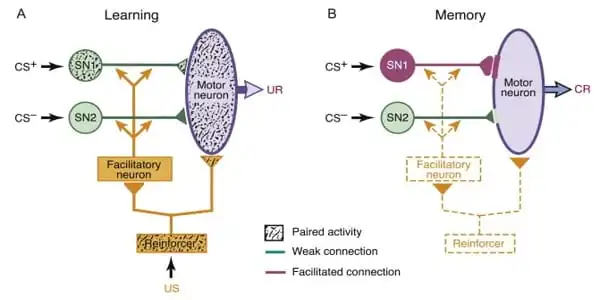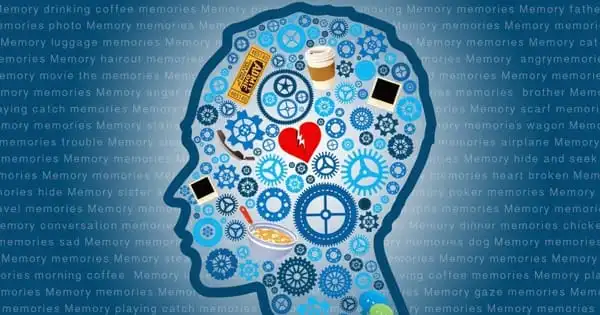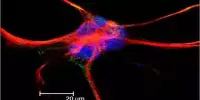The brain is a complicated organ that regulates our body’s thought, memory, emotion, touch, motor skills, vision, breathing, temperature, hunger, and every other process. The central nervous system, or CNS, is made up of the brain and the spinal cord that extends from it.
Learning and memory are concepts that are closely intertwined. Learning is the acquisition of a skill or knowledge, whereas memory is the expression of that skill or information. Another distinction is the rate at which the two events occur. Learning occurs when you gradually and laboriously gain a new skill or knowledge. Making a memory occurs when acquisition occurs instantly.
FMRP, a protein whose absence causes intellectual disability, may govern synaptic response in neurons by generating a feedback loop between the nucleus and the cell’s distant dendrites.
What occurs inside our neurons when we remember a password or learn to play the cello? The study of factors that affect cognitive development has contributed to some of our basic understanding of learning and memory. FMRP, a protein whose absence causes fragile X syndrome, intellectual disability, and some kinds of autism, has been revealed to play an important part in various brain activities, assisting in the regulation of synaptic connections between neurons.
The findings imply that FMRP aids in the establishment of a feedback loop between the nucleus and the dendrites, a mechanism that Darnell believes may create a crosstalk between a cell’s command center and its thousands of distant extensions, thereby controlling the synaptic response.
Robert B. Darnell
A new study reveals that the role of this protein is more complex than previously thought. Looking at memory neurons in the hippocampal region of the mouse brain, Rockefeller researchers discovered that FMRP performs two distinct functions. It modulates proteins essential for strengthening connections with other neurons within a neuron’s extensions, or dendrites. However, FMRP governs the overall status of gene expression in the neuron within the cell’s body.
“We were able to establish that this protein controls separate functions at different cellular regions by micro-dissecting the brain tissue,” says Robert B. Darnell, Rockefeller’s Robert and Harriet Heilbrunn Professor and HHMI Investigator who led the research.
The findings, published in the journal eLife, may give new clues to mechanisms underlying learning and memory, intellectual dysfunction, and autism.
Master regulator
Every memory, whether formed or lost, necessitates a change in the strength of synapses between neurons. A neuron can adjust synaptic strength as incoming communication arrives in the form of an electric signal, for example, by adding new receptors or eliminating old ones, an update that necessitates the rapid production of a deluge of new proteins.
Protein synthesis takes place at the cell’s dendrites, which are packed with RNA molecules ready to be translated into proteins. FMRP functions as a switch, slowing translation by binding to RNA sequences and then resuming it by dissociating from the RNA.

FMRP has been shown to directly bind and control over 900 RNAs. Darnell and his colleagues used molecular genetics to label individual mouse neurons, then removed synapses and cell bodies by hand to better understand the protein’s involvement in learning and memory. They next employed CLIP, a technology invented by the lab to freeze protein-RNA complexes in place and evaluate their composition.
The dendritic fraction contained FMRP bound to RNAs whose protein products can alter synaptic responsiveness. Simultaneously, within the same neuron’s cell body, the protein bound to a distinct set of RNAs that code for chromatin modifiers, proteins that regulate gene expression by entering the cell nucleus and adding chemical tags to DNA.
The findings imply that FMRP aids in the establishment of a feedback loop between the nucleus and the dendrites, a mechanism that Darnell believes may create a crosstalk between a cell’s command center and its thousands of distant extensions, thereby controlling the synaptic response.
“If neurons were not tightly controlled, they may continue to become more and more stimulated, eventually leading to a seizure, as observed in fragile X syndrome,” he explains. “The system is designed to keep itself contained.”
It is now evident that distinct brain systems are involved in various types or components of learning and memory. Memory processes have been broadly classified as either explicit or implicit. Thus, explicit memories for experience are associated with the hippocampus–medial temporal lobe system, and implicit basic associative learning and memory are associated with the cerebellum, amygdala, and other systems. However, many of these brain–memory systems are active to some extent in learning circumstances under normal conditions.















